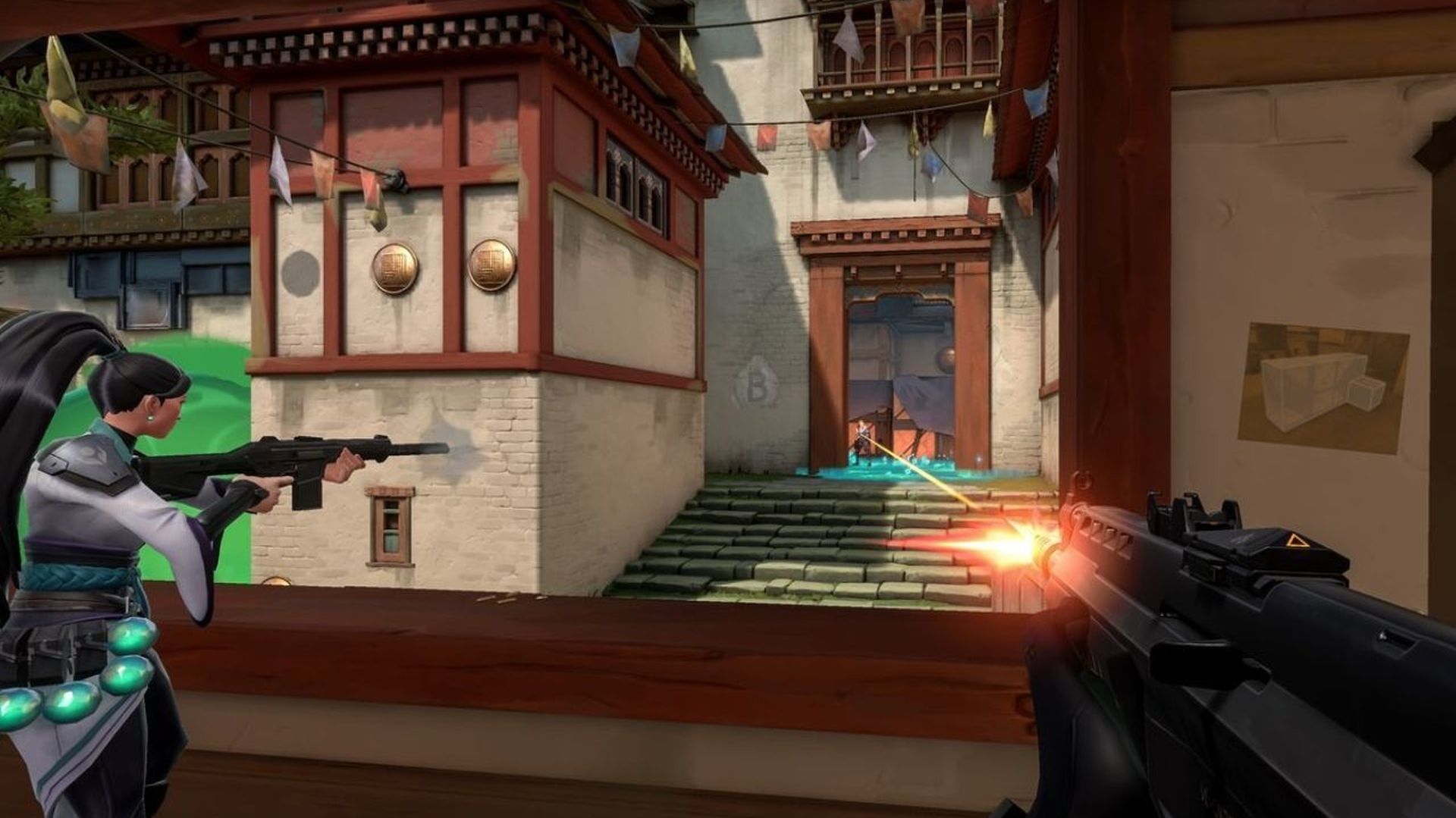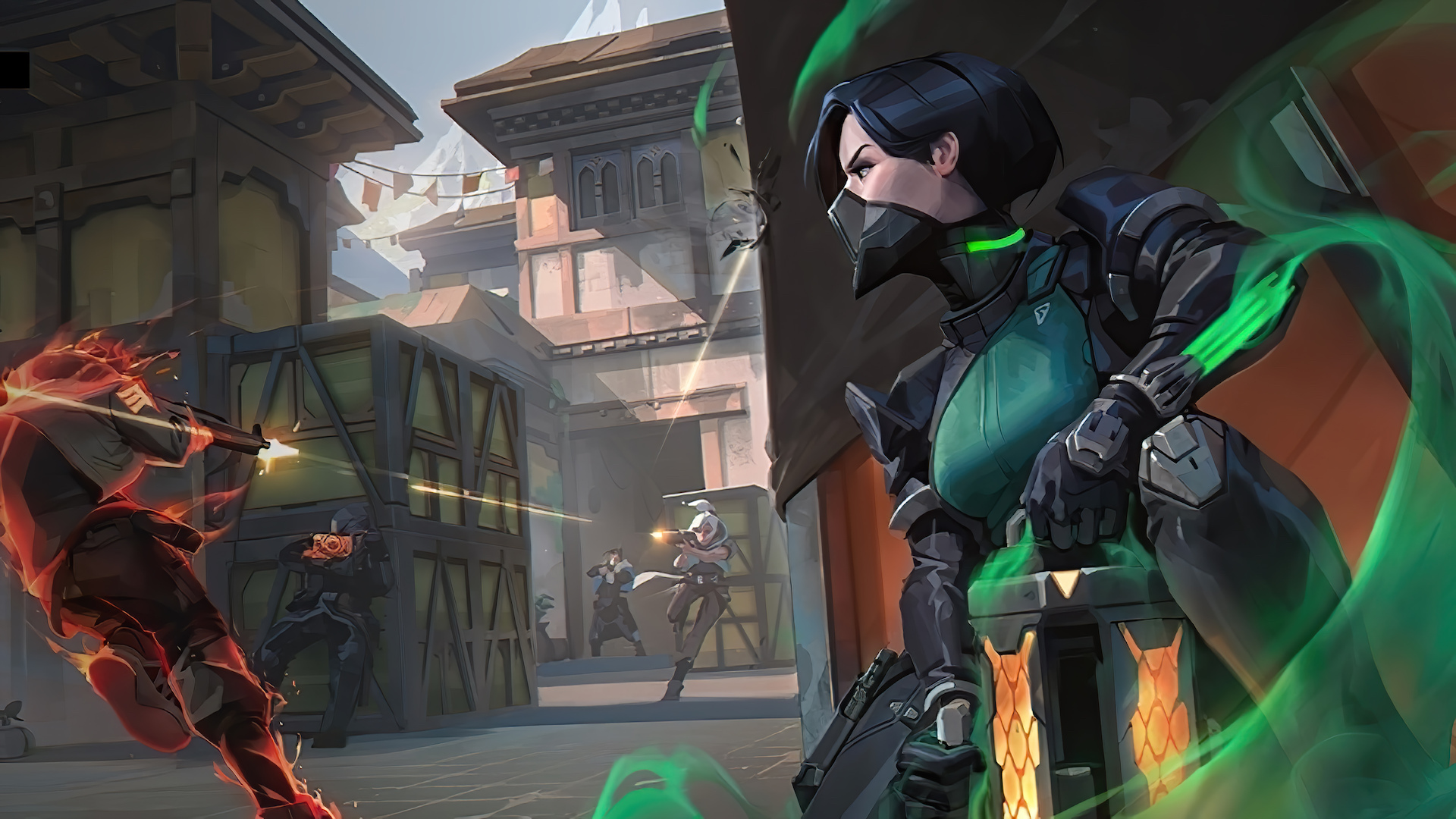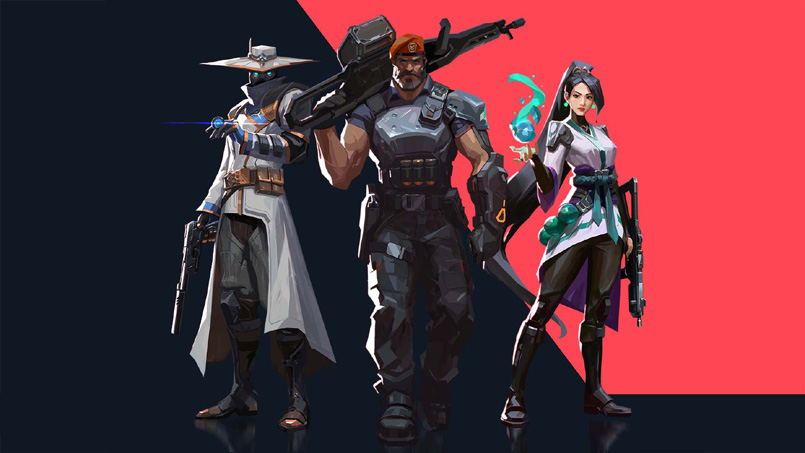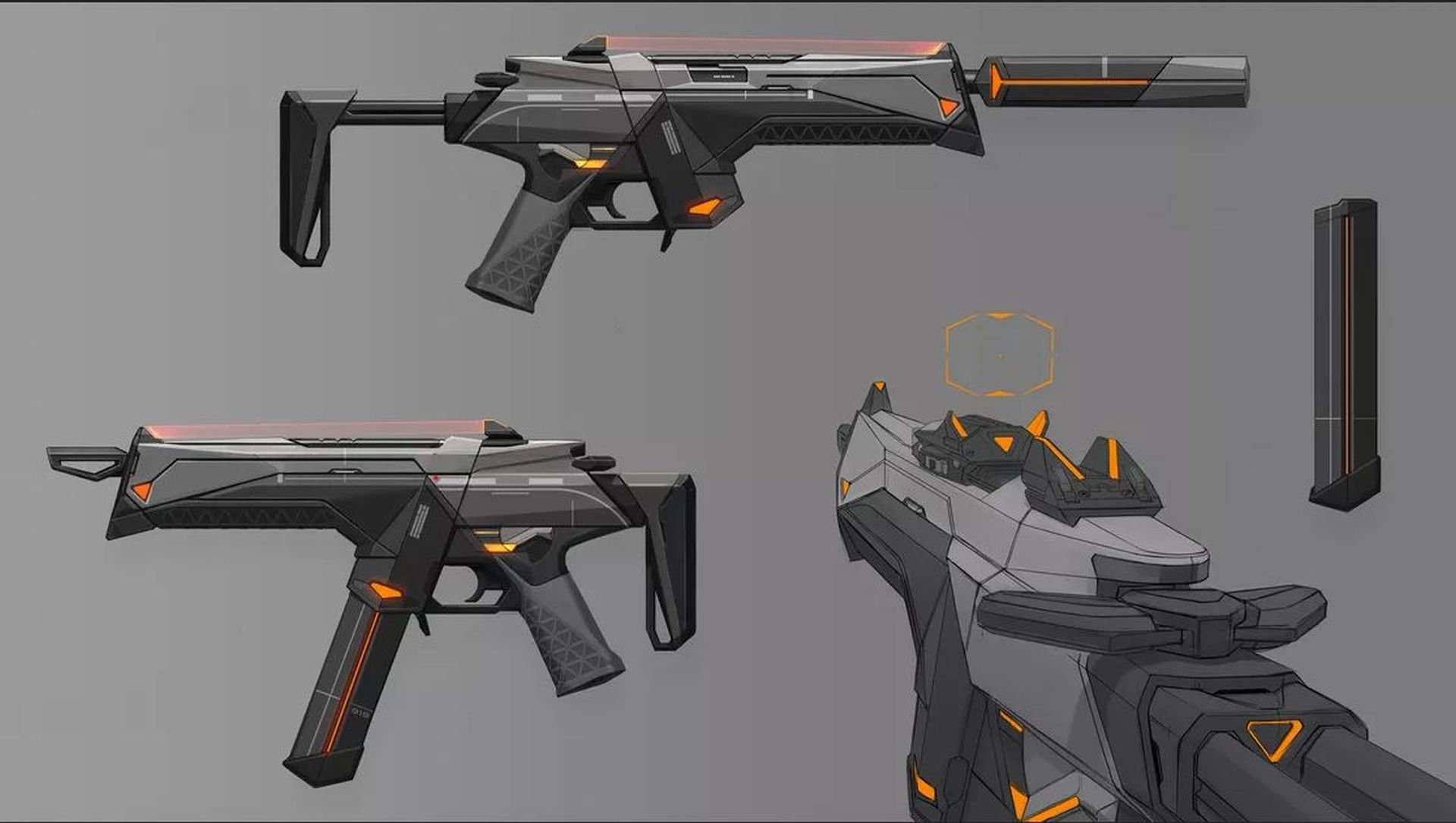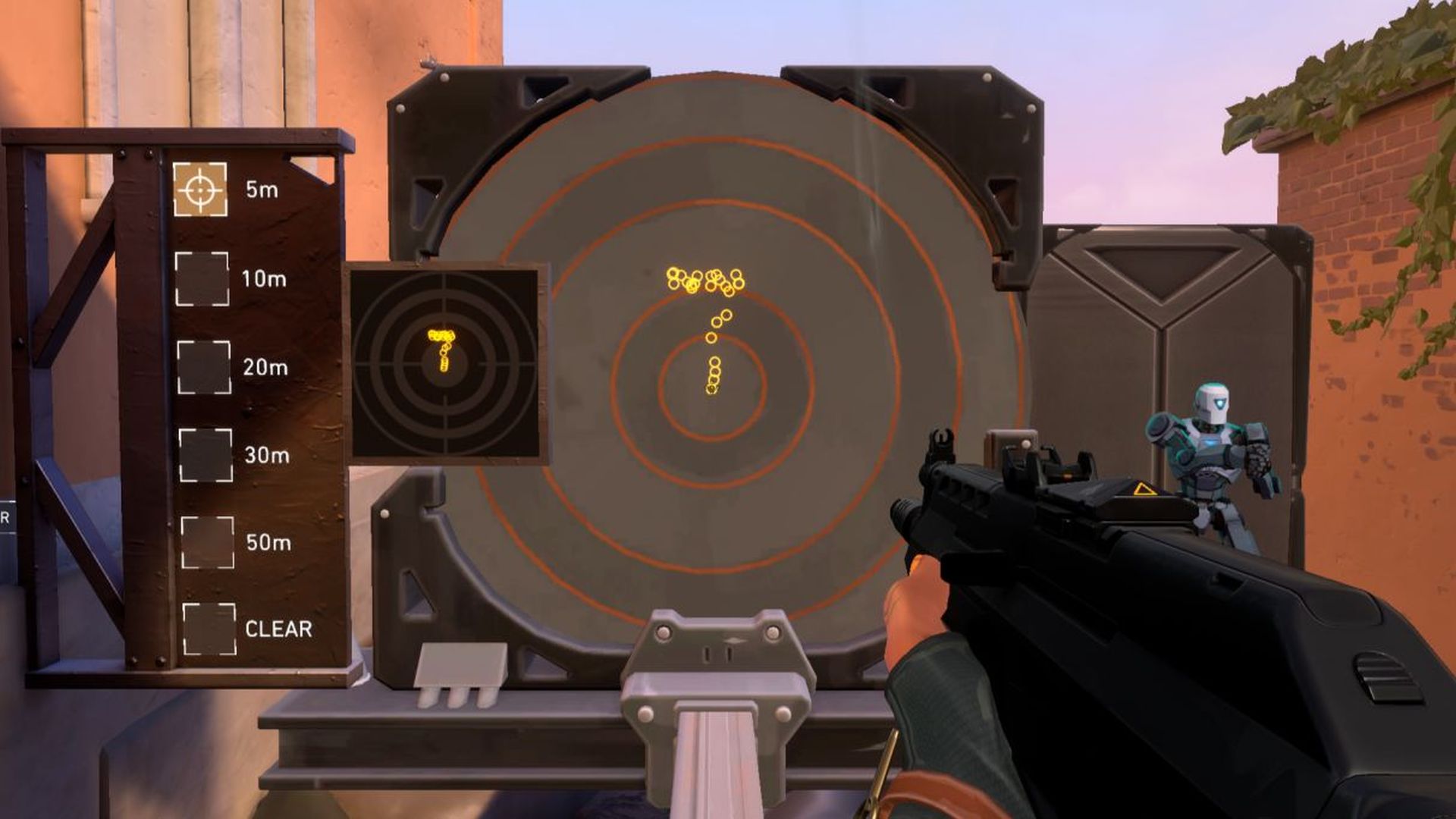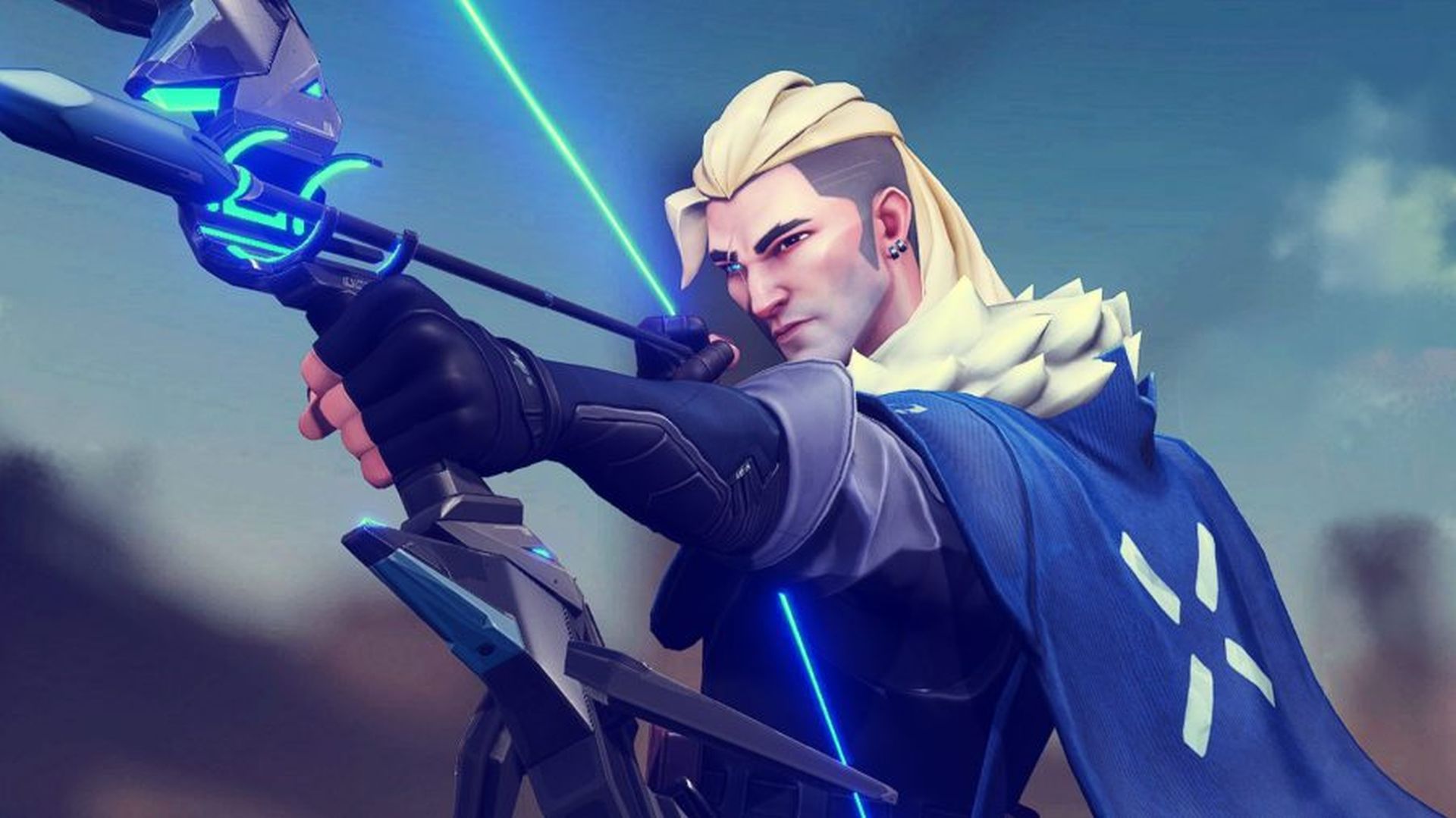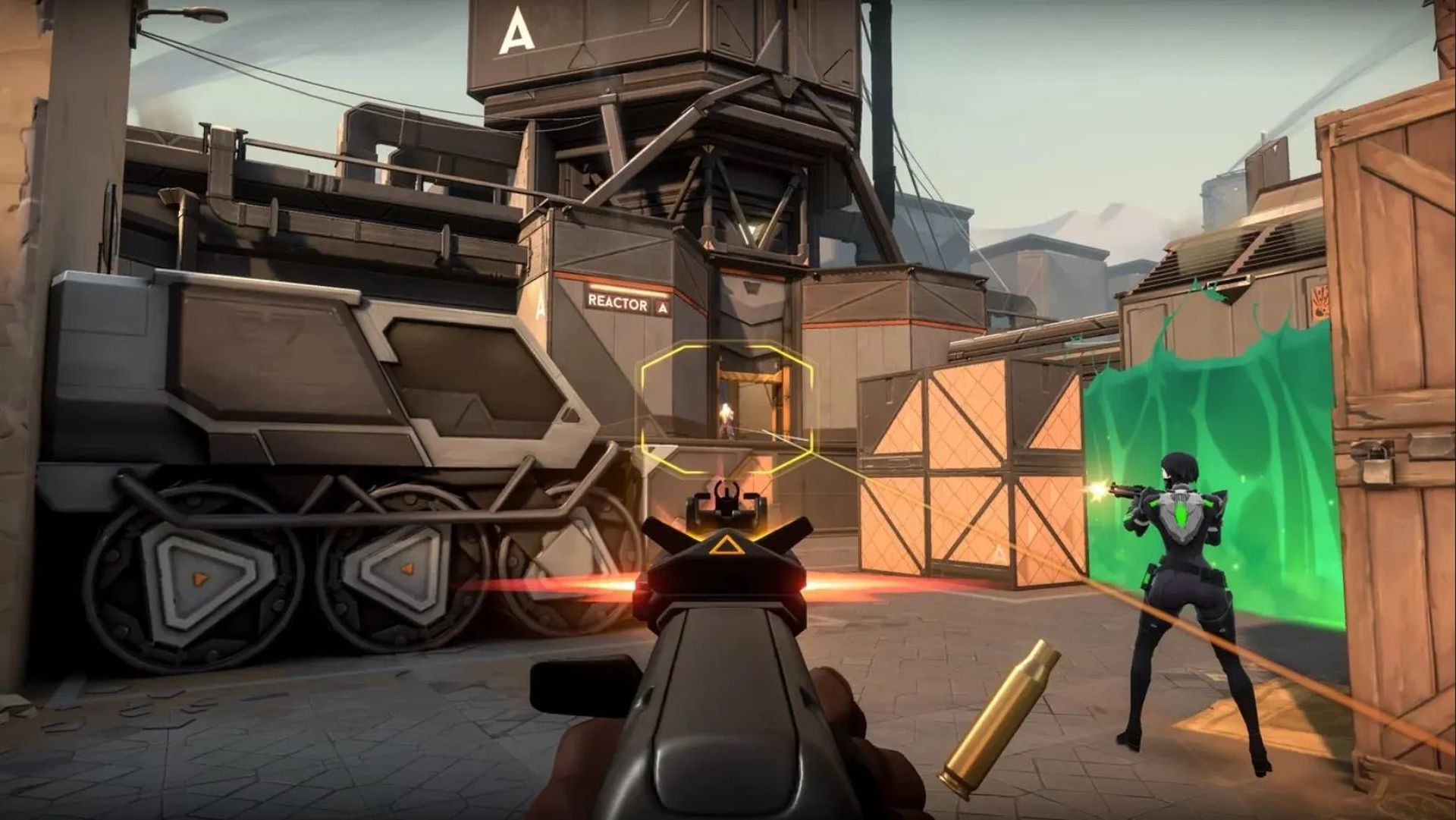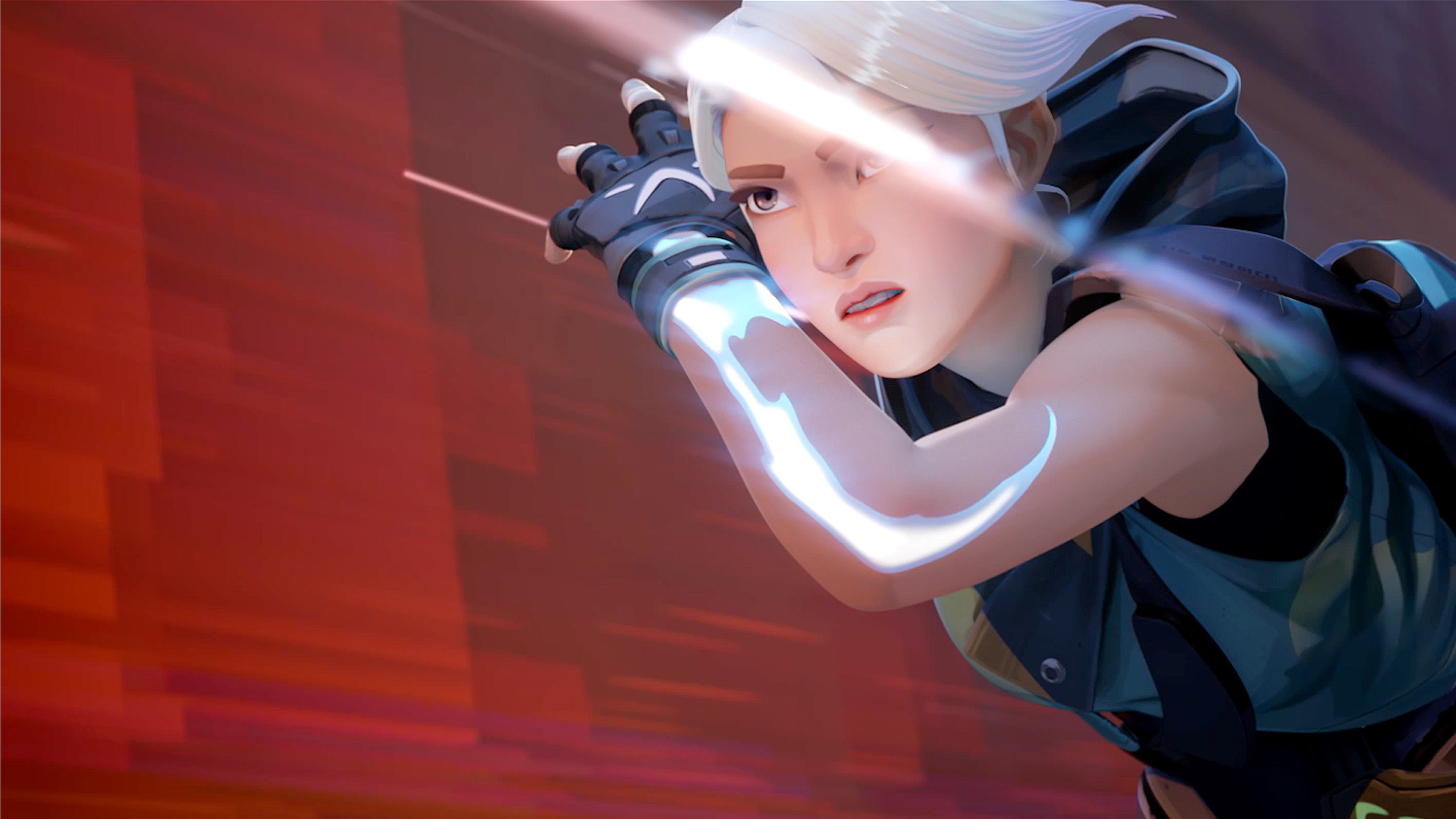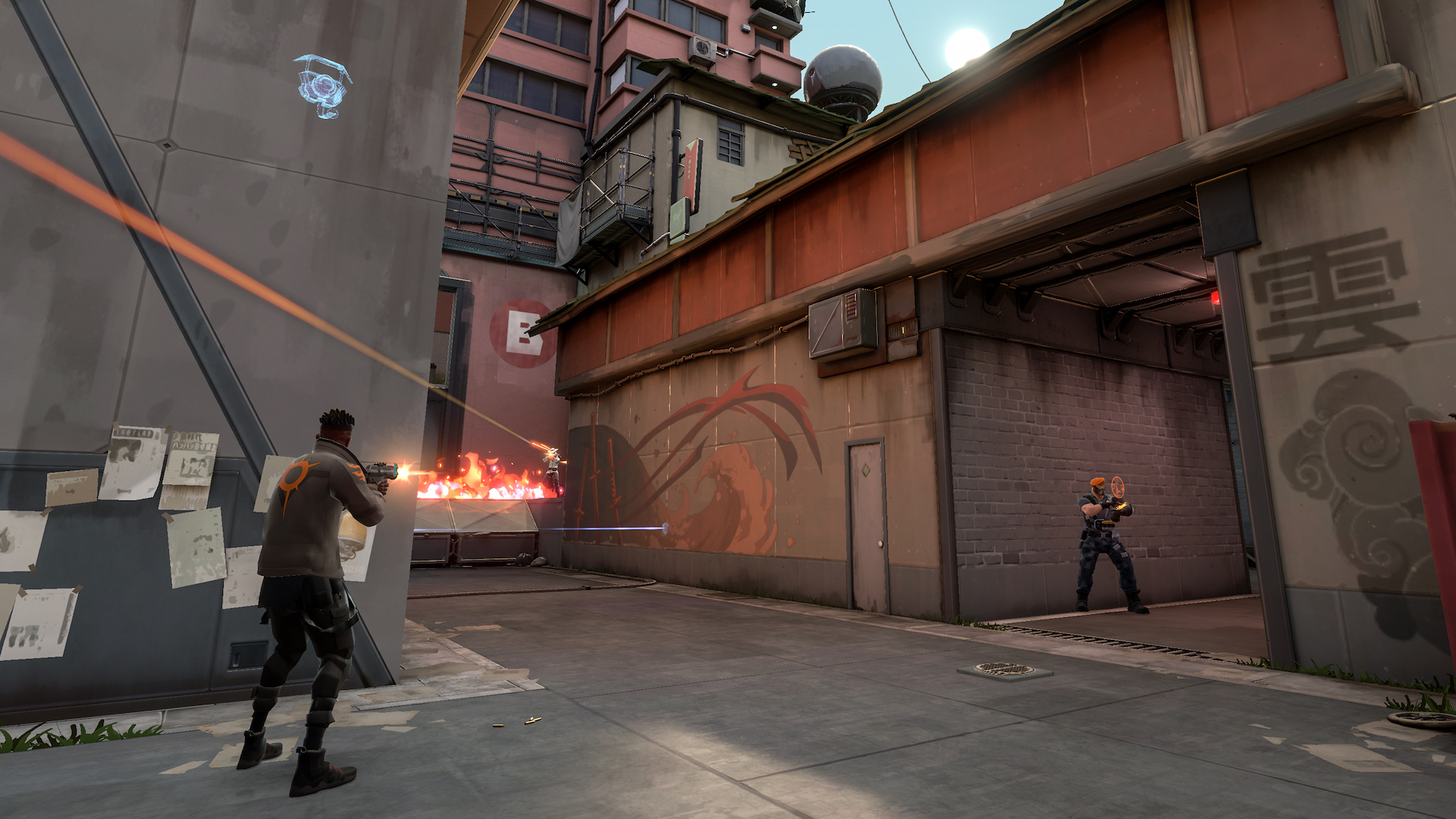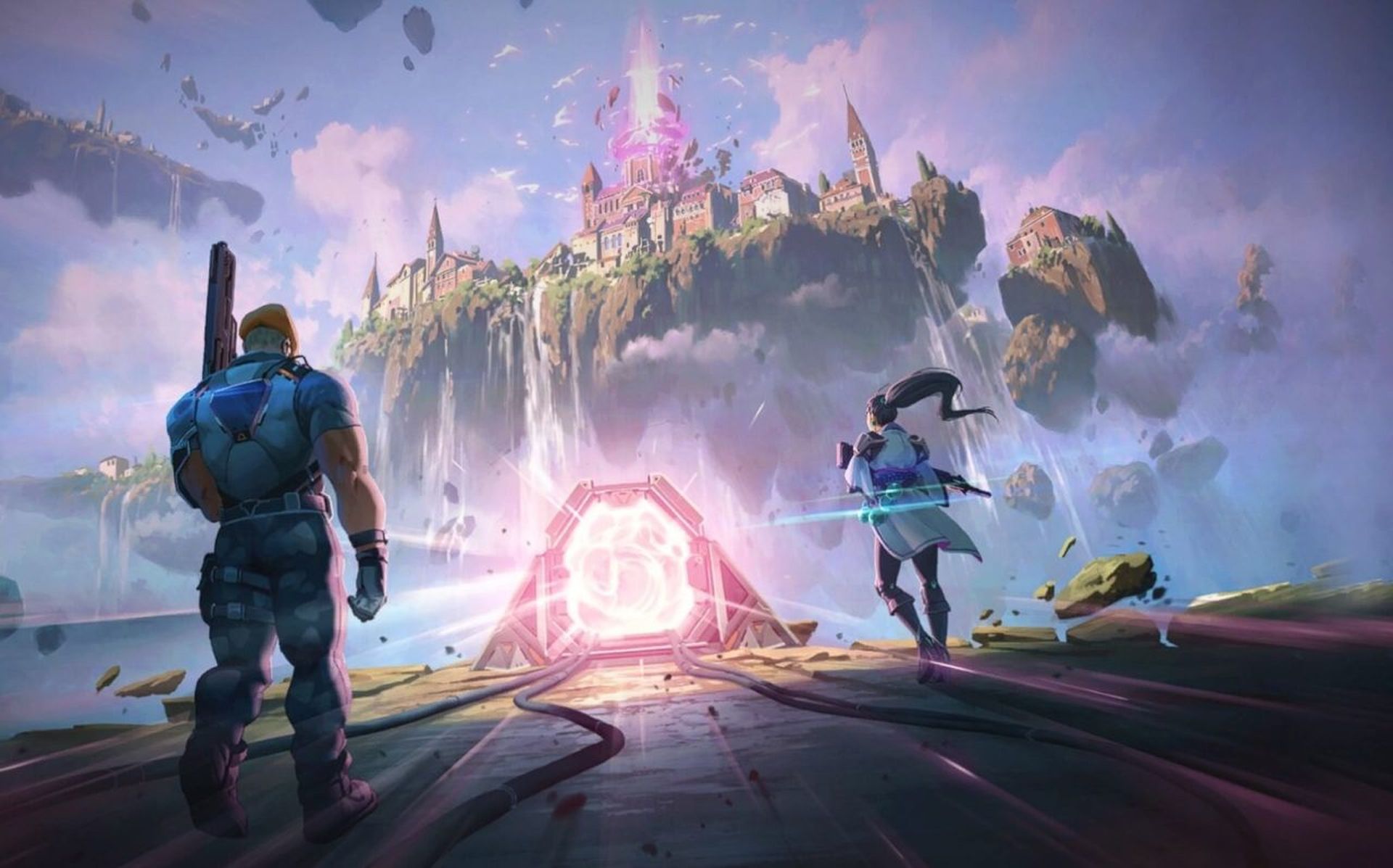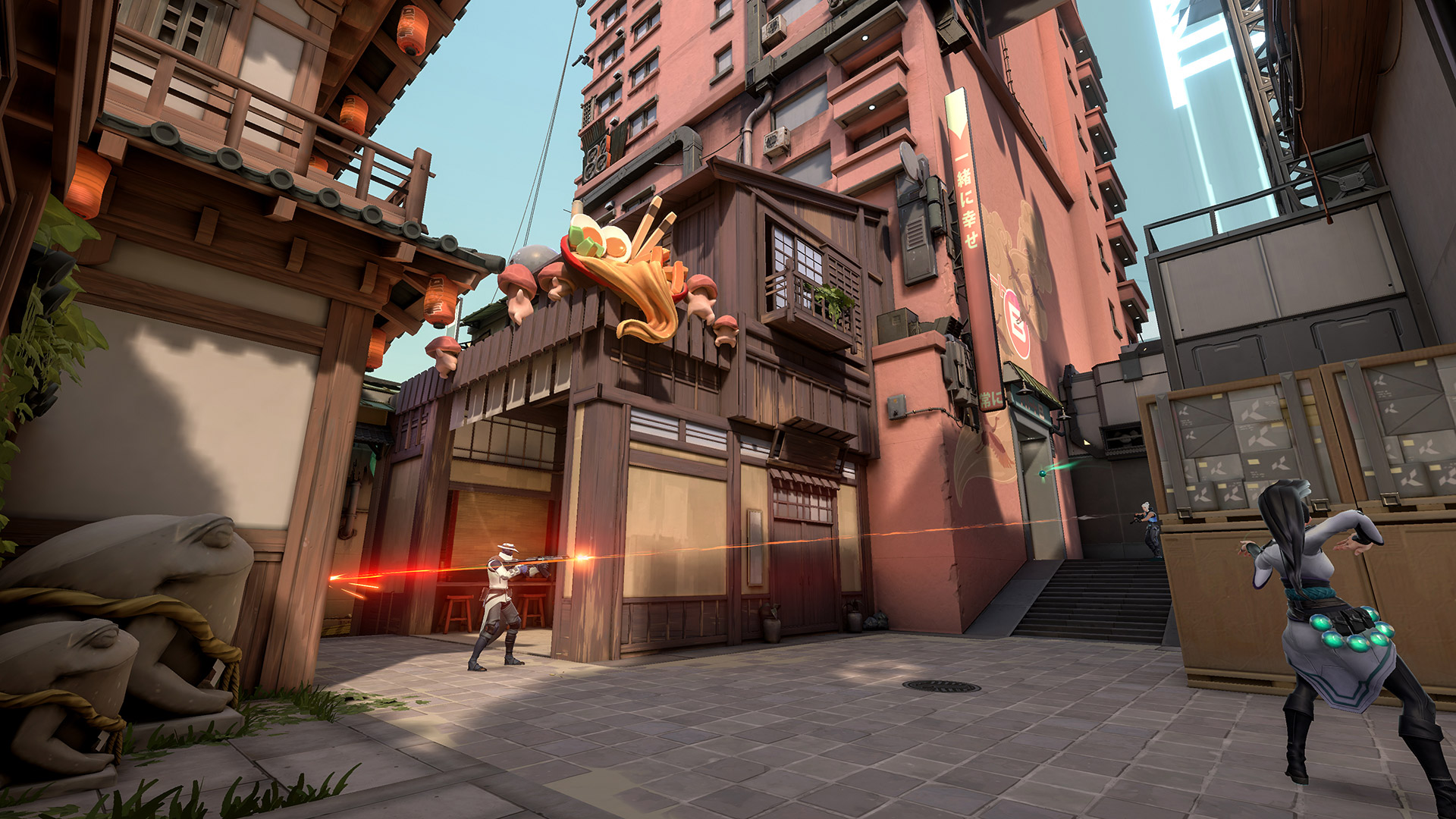
Riot Games’ Valorant has been a major topic of discussion lately. Its closed beta debuted on Twitch to a crazy response with over 334 million hours watched in April. With Valorant releasing on June 2nd for PC, what are some of the things you should know before jumping in? Let’s break down 15 of those things here.
What is Valorant?
It’s a free-to-play first person, team-based 5v5 shooter where players handle guns with fantastical names (but functioning closer to real world weapons) while using abilities and Ultimates. Movement is slower and a lot more tactical – players are encouraged to check corners, hold sight lines and communicate with their team for success. The team is given an objective and must win rounds to score points with each match being a best of 24 rounds.
Gameplay
So what exactly do you do in Valorant? There’s one key mode where two teams of five players square off. One team, the attackers, must plant the Spike (aka the bomb) at a specific location. The other team, the defenders, have to stop them. Attackers earn points by successfully planting the Spike while the defenders earn points by either defusing the Spike or defending until the timer run out. Of course, if either team eliminates the other, then they also earn a point for that round. Attacks and defenders switch sides after 12 rounds. If you’ve played Bomb Defusal in Counter-Strike: GO, then Valorant‘s version is more or less the same.
Maps
There are currently three maps available – Haven, Bind and Split – each with their unique sites and structures. A fourth map, Ascent, taking place in Venice will reportedly release at launch. While they may not seem like much at first glance, there’s a lot going on in Valorant‘s maps. The arrangements of corridors and spaces can lead to different strategies for deploying smoke, pushing and defending (depending on the Agent you’re playing as). It’s a lot to take in and knowing the call-outs for each specific section is an integral part of success.
Agents
Let’s get into the “hero shooter” part of Valorant. Players will select different Agents, each with their own abilities and roles, with ten available at launch. Currently, we know about nine of them and they fall into four key roles. Initiators essentially provide reconnaissance; Controllers serve a multitude of functions, from stealth to area control; Duelists are those that focus on more damage dealing abilities; and Sentinels act as defenders/Support heroes.
While these classifications certainly help, each agent has a set of abilities that define different play-styles and influence a variety of situations. Raze is a demolition expert that can cause mayhem with cluster grenades and take out several foes with a rocket launcher. On the other hand, Jett is an agile fighter who can dash around, jump to higher ground and deploy knives as her Ultimate. Both fall into the Duelist category but have their own niches. Similarly, in terms of Initiators, Sova is good for obtaining data via arrows that can detect foes through walls while Breach is more about stunning foes through walls and CC with his signature and Ultimate. Understanding how each agent works, especially with the others, is the key to setting up game-winning plays.
Locked Agents
Not all Agents are available immediately, however. The first two unlocked heroes are free through earning XP, one at level 5 and the other at level 10. For everyone else, you’ll need to undertake a Contract from the Collections tab. As you earn XP by playing, it will go towards unlocking cosmetics and eventually that Agent. Of course, if you don’t want to grind, you can pay about $10 for 1000 Valorant Points to purchase all the required levels and the Agent.
Weapons
As noted before, weapons in Valorant are reminiscent of real-world firearms, both in how they look and perform. There are assault rifles like the all-rounder Vandal and semi-automatic Guardian; sniper rifles like the massively powerful Operator; sidearms like the fast-firing Ghost and Revolver-esque Sheriff; shotguns like the pump-action Bucky; submachine guns like the Spectre for mid-range engagements; each costing a different amount of Creds. Everyone starts with the Classic pistol and as the rounds progress, you can earn Creds to purchase other weapons. Each weapon has a unique spread pattern which you need to learn to manage across different distances. Since headshots are instant kills, it certainly helps to get that spread down.
Practice Range
Thankfully, there’s the Practice Range which allows you to check spread and damage on targets from a variety of distances. You can also partake in different challenges to refine your aim, practice objectives like Spike planting and defusal, roam around the map to learn the layout and even play against bots. It’s a great way to familiarize yourself with the ins and outs of the game before hopping online.
Buying and Economy
Economy can be very important in a game like Valorant. It basically defines the amount of Creds earned throughout the match. While you can earn Creds by doing things like planting the Spike or earning kills, the real money comes from winning rounds which give 3000 Creds. Losing will net you 1900 Creds, and if you lose again, an additional 500 is thrown in. Lose three times in a row and you get 1000 bonus Creds. This means that you can make a comeback even when seemingly down and out. Creds are used to purchase weapons, armor and ability charges like smoke grenades.
If a teammate is short on Creds, they can request items and have them purchased by a more affluent teammate. Items can be sold back, allowing you to change up strategies in different rounds. You can also Force Buy, which will grant only the necessities, and Partial Buy, which provides cheap weapons for a few team members. On a deeper level, knowing when to buy and when to hold is important since having a better economy than your opponent (who’s Creds you can see during the match) can help in turnarounds or maintaining the lead.
Pinging
A pinging system is available to call out objectives, the environment, enemies and so on. There’s also a Ping Wheel that can be brought up during gameplay for issuing commands like rushing enemies, rotating, falling back, taking point and denoting the status of one’s Ultimate. Given how valuable information can be during matches, using the pinging system is another key to success.
Competitive Mode
Competitive Mode won’t be available when Valorant launches but it’s still important to know how it works. There are eight ranks in total – Iron, Bronze, Silver, Gold, Platinum, Diamond, Immortal and Valorant. Except Valorant, each rank has three different tiers to earn. You must complete 20 unranked matches to play Competitive and can queue in five player parties as long as teammates are within two ranks. Your performance will matter in the early going but as you progress more, wins will take precedence (winning in a dominant fashion even more so). We’ll see how things change at launch, especially with Riot’s desire to add an “element of persistent rank progression” that recognizes your achievements throughout the Competitive experience.
Dedicated 128 Hz Tickrate Servers
Competitive shooters usually benefit from higher tickrate servers and Valorant is set on that front with support for dedicated 128 hz tickrate servers. We say “usually” because it’s also dependent on one’s monitor and GPU. If you want the very best competitive experience, then having, say, a 144 Hz monitor and running the game at a solid 144 frames per second will be ideal.
System Requirements
Like many competitive shooters on PC, Valorant is very scalable. Its minimum requirements include an Intel Core 2 Duo E8400, Intel HD 3000 GPU with 1 GB VRAM, 4 GB of memory and Windows 7/8/10 64-bit. This will only run the game at 30 frames per second though. To play at 60 FPS, you’ll need to up the CPU and GPU to an Intel i3-4150 and GeForce GT 730 respectively. Those seeking the coveted esports experience will need an Intel Core i5-4460 3.2GHz and GeForce GTX 1050 Ti. Performance issues still crop up during the beta but these are expected to be fixed by launch (we hope).
Anti-Cheat
Valorant‘s anti-cheat system Vanguard has been the center of controversy since it was first revealed. This is due to it being kernel mode driver that would constantly run in the background, even if you weren’t playing, and starting at system boot-up. It would also block certain drivers, which caused issues for many players. Riot has since fixed these issues and re-enabled support for said drivers. It’s also easier now to enable or disable Vanguard from one’s system tray – though it’s still necessary to play the game, of course. If you’re keen on getting into Valorant, you should be aware of how it’s anti-cheat functions and the amount of control it has.
No Loot Boxes, Battle Pass Confirmed
There are no loot boxes – all micro-transactions are direct purchase. Contracts can be purchased with Valorant Points to straight up unlock new Agents and there are several cosmetics like weapon skins and sprays currently available in closed beta for real money as well. A battle pass will also be provided but alternate skins currently aren’t available. Executive producer Anna Donlon told Polygon that this was to ensure characters remained recognizable during gameplay. If alternate skins did come about, it “would have to be in a way that there’s absolutely nothing to impact the gameplay. It’ll be narrow. I think there’s a way to do that. And those are things that we’re interested in exploring.”
Esports
Obviously, there’s quite a bit of talk about Valorant‘s esports potential especially given the highly successful esports scene that Riot Games has fostered. While numerous organizations like Sentinels and Gen.G have already signed players to teams, there is no dedicated league for Valorant yet. Whalen Rozelle, director of esports at Riot, said the company doesn’t want to “force anything too quickly without knowing what’s best for esports fans.” For now, it’s very much “wait and watch” to see how far Valorant can thrive competitively but the sky is the limit.








